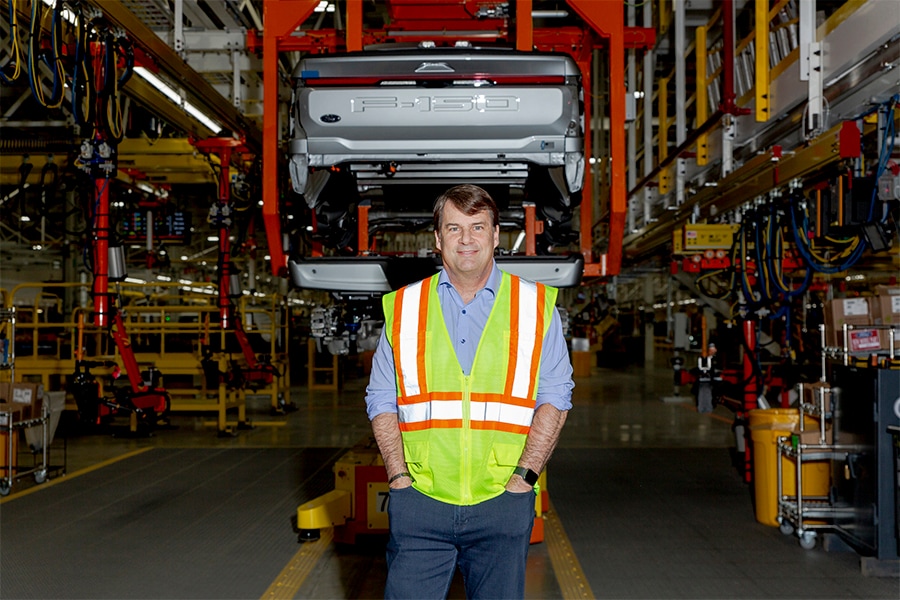
Ford Motors tries to reinvent itself to catch up to Tesla and Elon Musk
Sitting at the wheel of a prototype F-150 pickup truck at the company's test track in Dearborn, Michigan, CEO Jim Farley floored it. From a standing stop, the 4,000-pound truck surged forward and hit 60mph in four seconds
 Jim Farley, Ford’s chief executive, at the company’s production plant in Dearborn, Mich., April 4, 2022. Ford is about to introduce an electric F-150 pickup truck that could determine whether the automaker can survive and thrive in an industry dominated by Tesla. (Sylvia Jarrus/The New York Times)
Jim Farley, Ford’s chief executive, at the company’s production plant in Dearborn, Mich., April 4, 2022. Ford is about to introduce an electric F-150 pickup truck that could determine whether the automaker can survive and thrive in an industry dominated by Tesla. (Sylvia Jarrus/The New York Times)
On a recent Tuesday afternoon, Ford Motor CEO Jim Farley took a spin in what could become one of the most important vehicles in the company’s 113-year history: an electric F-150 pickup truck.
Sitting at the wheel of a prototype at the company’s test track in Dearborn, Michigan, Farley floored it. From a standing stop, the 4,000-pound truck surged forward. “Four seconds,” he shouted when it reached 60 mph. “That’s unbelievable for a vehicle of this size.”
Steering the truck to a series of dips and rises in the track, he said, “Let’s see if we can get some air,” and shouted “Yes!” as the wheels briefly left the tarmac over one incline. In a final lap, he careened around a steeply banked turn and floored it again on a straightaway until he hit 99 mph — just short of the track’s 100 mph speed limit.
“I can’t wait,” Farley said as he stepped out, shaking his head. “I can’t wait till customers get this truck.”
These are tense and exciting times for the auto industry. Driven by the dizzying success of Tesla, sales of electric vehicles appear to be on an unstoppable rise. The switch from making gasoline-powered cars and trucks to electric vehicles that emit no pollution from tailpipes will have far-reaching effects on the environment, climate change, public policy and the economy.
©2019 New York Times News Service







